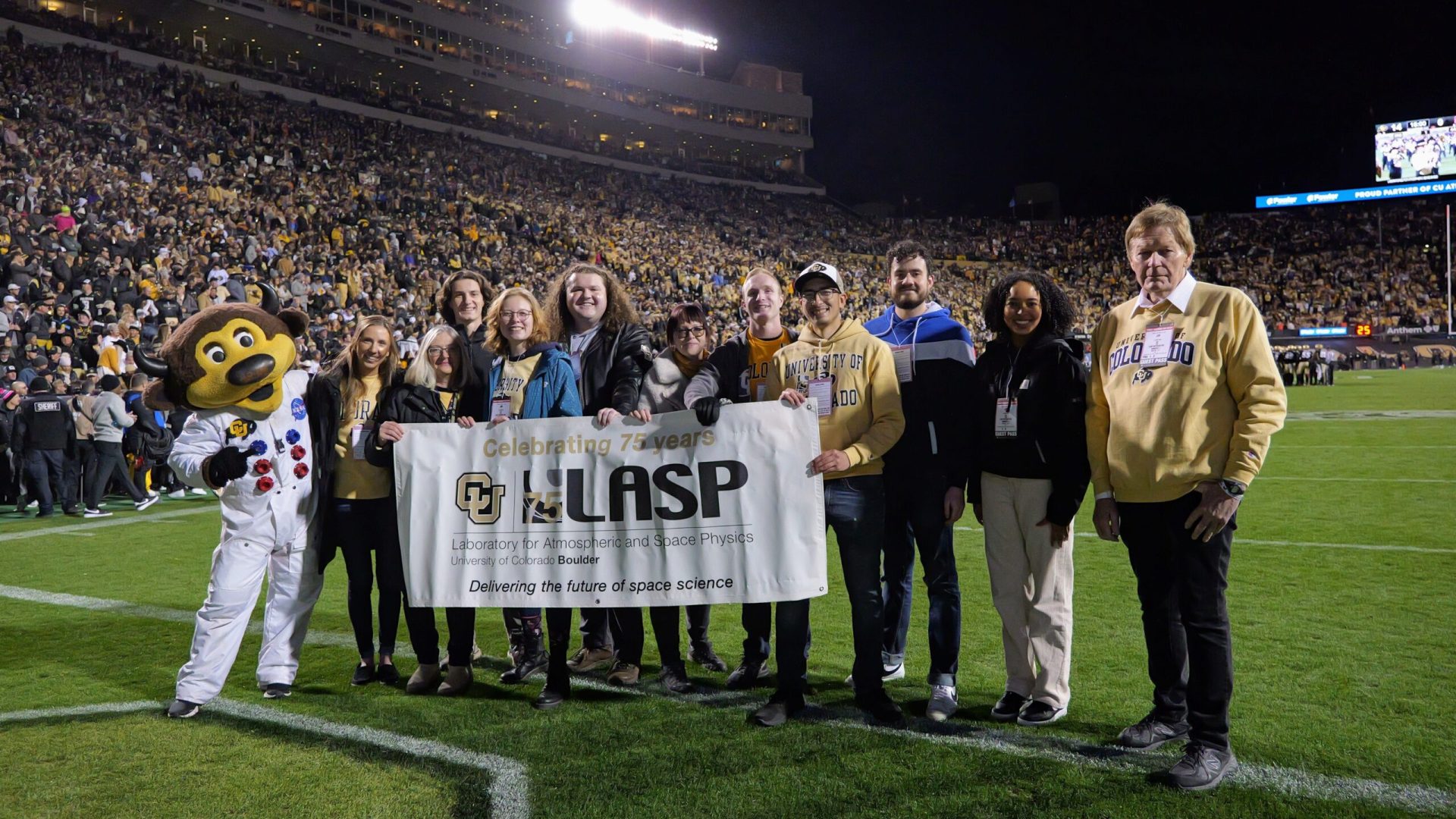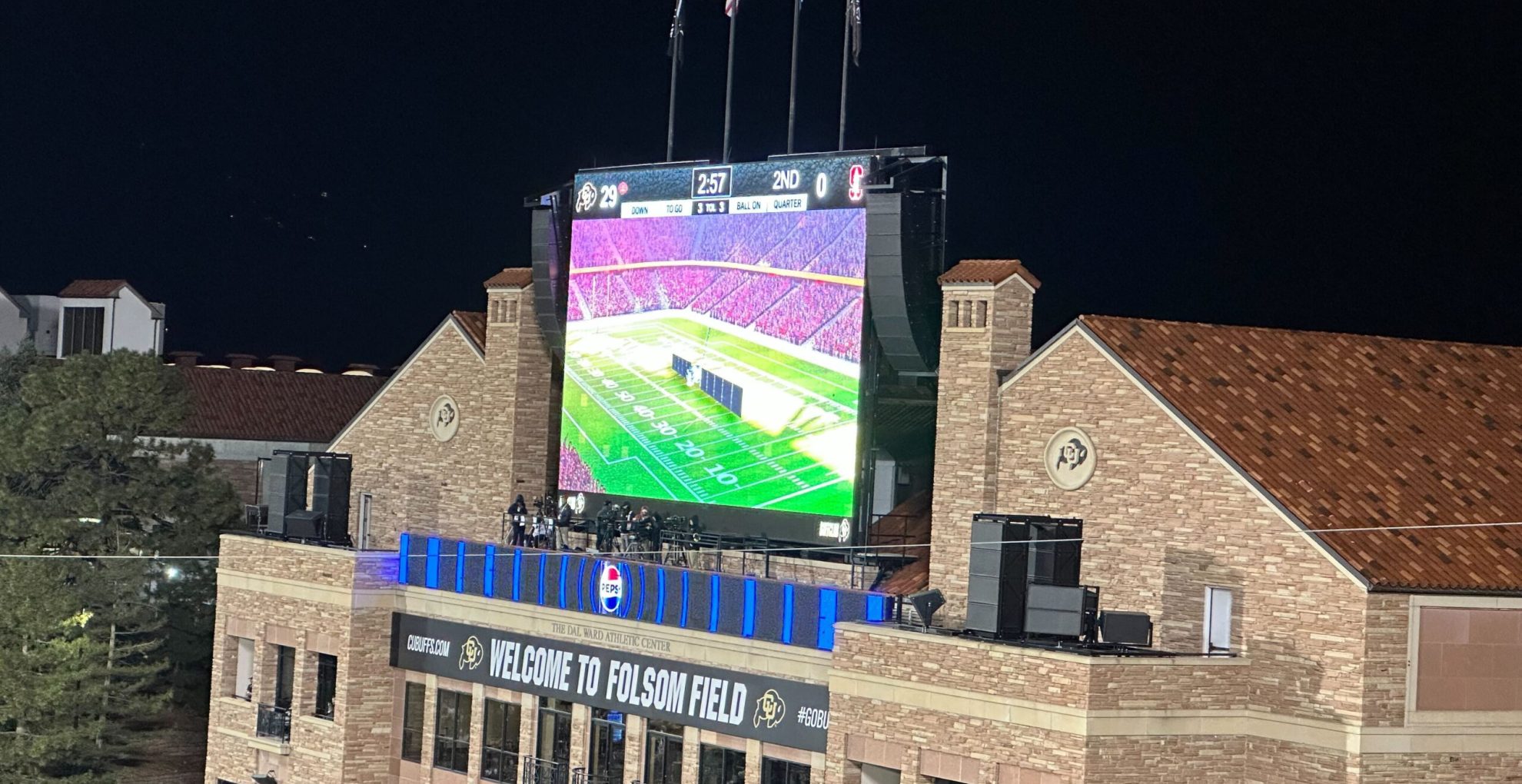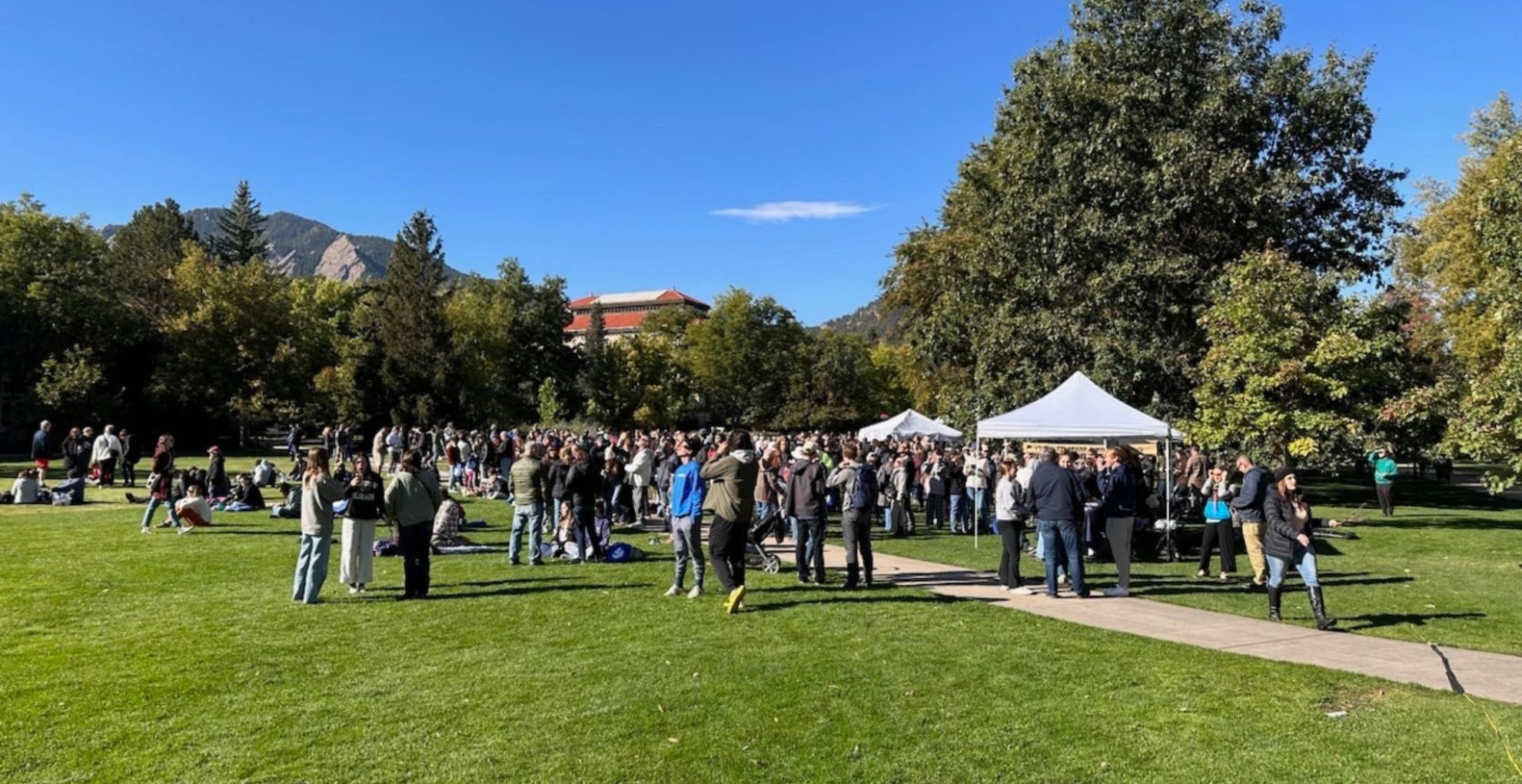
On Friday, October 13, in commemoration of LASP’s 75th anniversary, the lab was honored during the space-themed football game that pitted the University of Colorado Buffaloes against the Stanford Cardinal. This unique celebration included a number of special announcements and activities that took place throughout the game’s first half.
The game kicked off with an honorary coin-toss by Boulder astronaut John Grunsfeld, who appeared in his flight suit, along with LASP Director Dan Baker and LASP Deputy Director Pam Millar. During Dr. Grunsfeld’s nearly 25-year career at NASA, he flew on five shuttle missions and conducted eight spacewalks, three of which serviced the Hubble Space Telescope. In 2009, he installed Hubble’s Cosmic Origins Spectrograph instrument, which was built at CU Boulder in partnership with Ball Aerospace. During that mission, Grunsfeld was also appointed to faculty and research positions at CU Boulder, an offer he accepted via an email sent from space.
The chilly weather did not deter Folsom Field’s sold-out crowd, who were treated to Ralphie’s run to bring in the team at the top of both halves, plus an appearance by the Buffs’ other mascot, Chip, in his astronaut suit.

Where no other mascot has roamed
Between the first and second quarters of the game, LASP’s 75th anniversary was honored with an on-field recognition and a special video highlighting how Ralphie has been engraved on every science instrument that LASP has engineered since the mid-1980s. This includes the Ralphie engraved on the Venetia Burney Student Dust Counter, which was designed, built, and continues to be monitored by CU Boulder students. As part of NASA’s New Horizons mission, this dust counter is now more than 5 billion miles from Boulder and was highlighted in the article Ralphie in space!
The on-field recognition featured 10 CU Boulder graduate and undergraduate students who work at LASP, as well as LASP Director Dan Baker, and LASP Deputy Director Pam Millar. As the group carried LASP’s banner onto the field, the announcer noted that LASP, which was founded in 1948, a decade before NASA, is CU Boulder’s largest research institute and has sent instruments to study every planet in our solar system and beyond. Additionally, with a research and engineering portfolio valued at nearly $1 billion and more than 700 employees, including 200 students, LASP helps anchor Colorado’s $15 billion aerospace economy. LASP has engaged in many historic NASA missions, including the leading mission operations for the Kepler mission’s search for Earth-like planets and serving as the lead institute for the ongoing MAVEN mission to study Mars’ atmosphere.

During the fourth timeout in the second quarter, Buffs fans also learned about NASA’s flagship Europa Clipper mission, which in one year will blast off to Jupiter carrying the LASP-built Surface Dust Analyzer (SUDA) instrument. All sports fans were encouraged to participate in the mission’s Message in a Bottle campaign, which lets individuals submit their names to be sent with the spacecraft to Jupiter’s icy moon Europa. This is just one of the exciting upcoming missions and projects in which LASP and other CU Boulder groups and researchers are involved.
LASP’s expertise in solar science research was also highlighted during a pre-game video that referred to the next day’s partial eclipse and the kick-off of NASA’s Heliophysics Big Year.

“Ring of fire” eclipse
The celebrations honoring LASP were timed to coincide with Saturday’s partial “ring of fire” annular eclipse. LASP joined other organizations hosting the Solar Eclipse Viewing Party and Space Resource Fair at Norlin Quad on CU’s main campus, which attracted more than 200 attendees. This event was sponsored by NSF, NOAA, and NASA, and also featured other institutions based in Colorado.
The goals of the fair were to provide the public with resources on how to safely view the partial solar eclipse, engage with the community on solar science, and inform visitors of the full solar eclipse that will be visible across parts of the U.S. in April 2024. Several LASP staff volunteered to help during this event and interacted with the local community.
LASP’s industry and research partners also celebrated while viewing the solar eclipse together, capping off a unique celebration of the lab’s milestone anniversary.
Founded a decade before NASA, the Laboratory for Atmospheric and Space Physics at the University of Colorado Boulder is on a mission to transform human understanding of the cosmos by pioneering new technologies and approaches to space science. LASP is the only academic research institute in the world to have sent instruments to every planet in our solar system. LASP began celebrating its 75th anniversary in April 2023.



